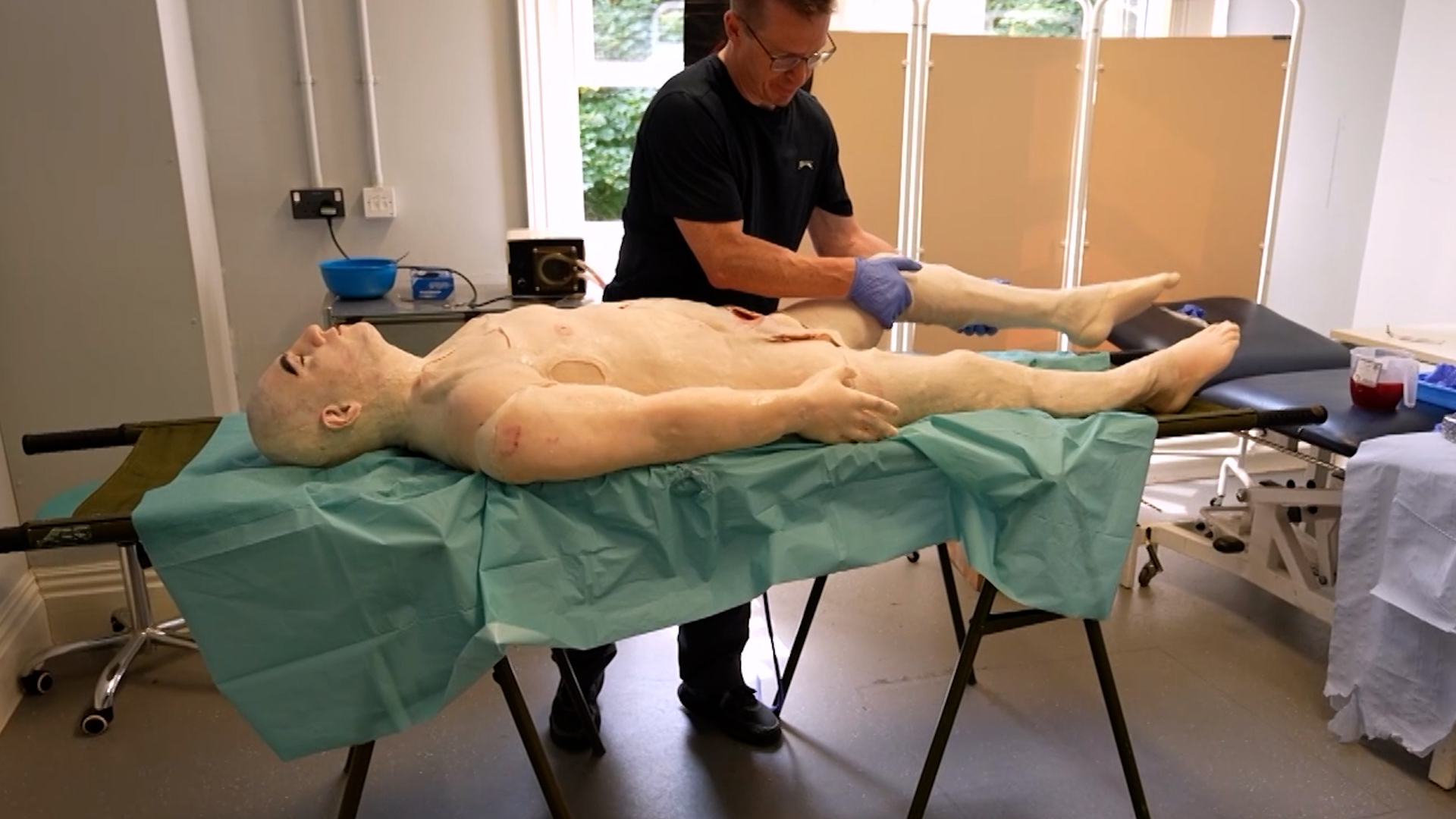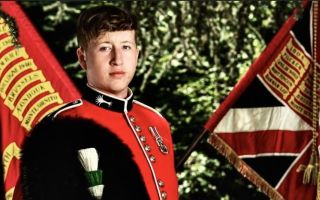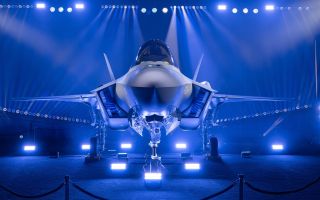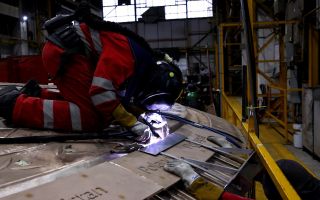Lifelike mannequin that has a pulse and bleeds to transform military medical training
Realistic mannequins have been made before to simulate specific injuries, but there's never been anything quite like SAM.
The Surgical Anatomy Model (SAM) is a cutting-edge trauma casualty simulation mannequin that, after a successful pilot, is now being deployed across the military and is transforming medical training.
SAM is extra special because of how realistic he is – he can be given blast injuries, gunshot wounds, and be cut open in numerous ways, and he also has a pulse option and bleeds warm 'blood'.
SAM's bones are made of resin, and various types of silicone make up his skin, fat, fascia, muscles and organs.
The lifelike mannequin brings two real advances.
Adaptability – SAM is modular and allows a whole range of complex conditions to be simulated and an array of different procedures to be carried out – all in one model.
Reusability – previous mannequins have allowed for surgery practice, but once cut open they are difficult to repair.
SAM is also modular and comes with spare parts so can be operated on and repaired over and over again.

The model was created by civilian orthopedic major trauma surgeon Professor Ian Pallister and funded by the MOD.
Prof Pallister said: "When I was going through training, if we were doing a simulation, we'd get to the point where we'd identify the need for a surgical procedure, and we'd treat everyone to a vivid description about how well we would do it.
"And it'd be faultless and there'd be no difficulties with it at all!
"The dimension of actually doing the procedure – albeit simulated, the surgeons are engaged, the scrub nurse or practitioners who are helping them are engaged in a way that simply talking about it doesn't happen."
The SAMs are being sent not only to training establishments, but also to places troops are deployed, and aboard the aircraft carriers, so medics can keep their skills up to date.
Plans are also afoot to make some more gender and ethnically diverse versions of SAM.









